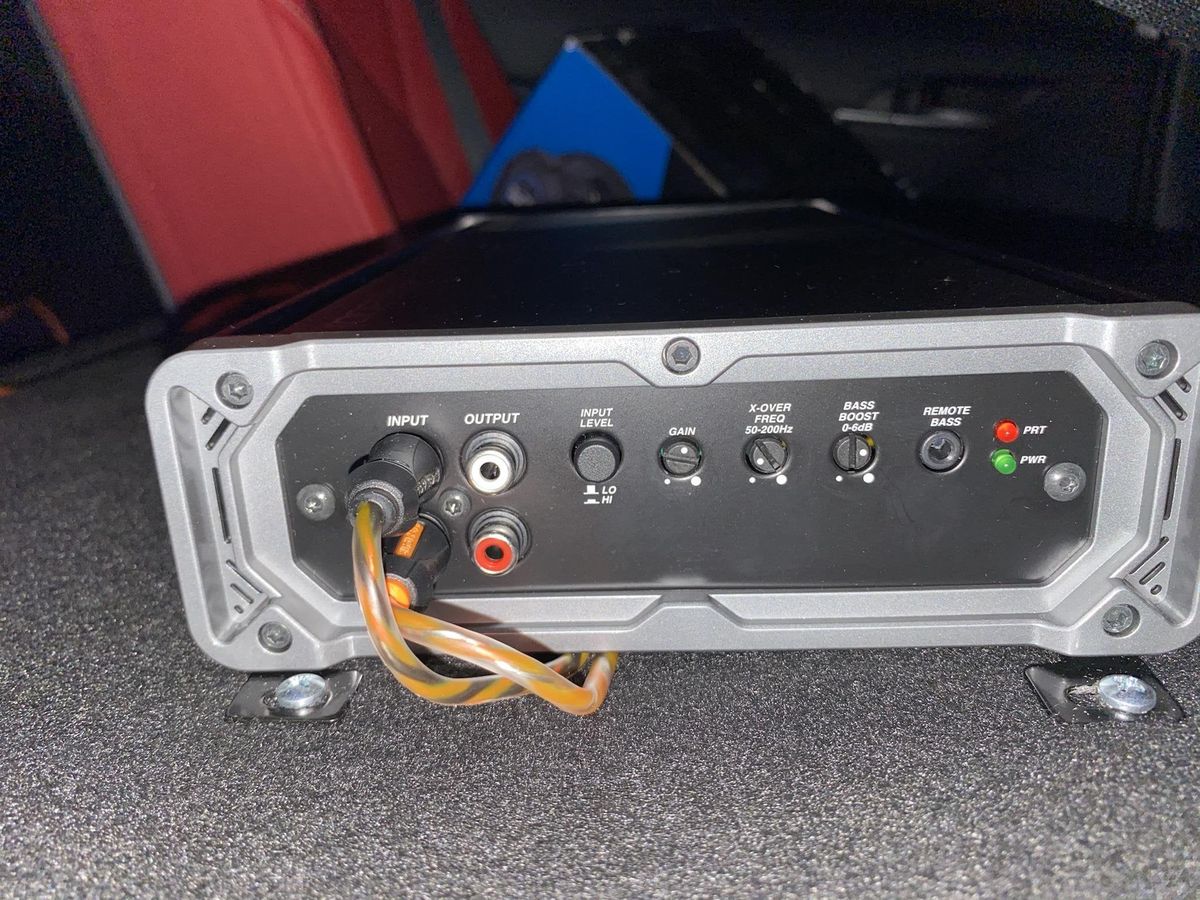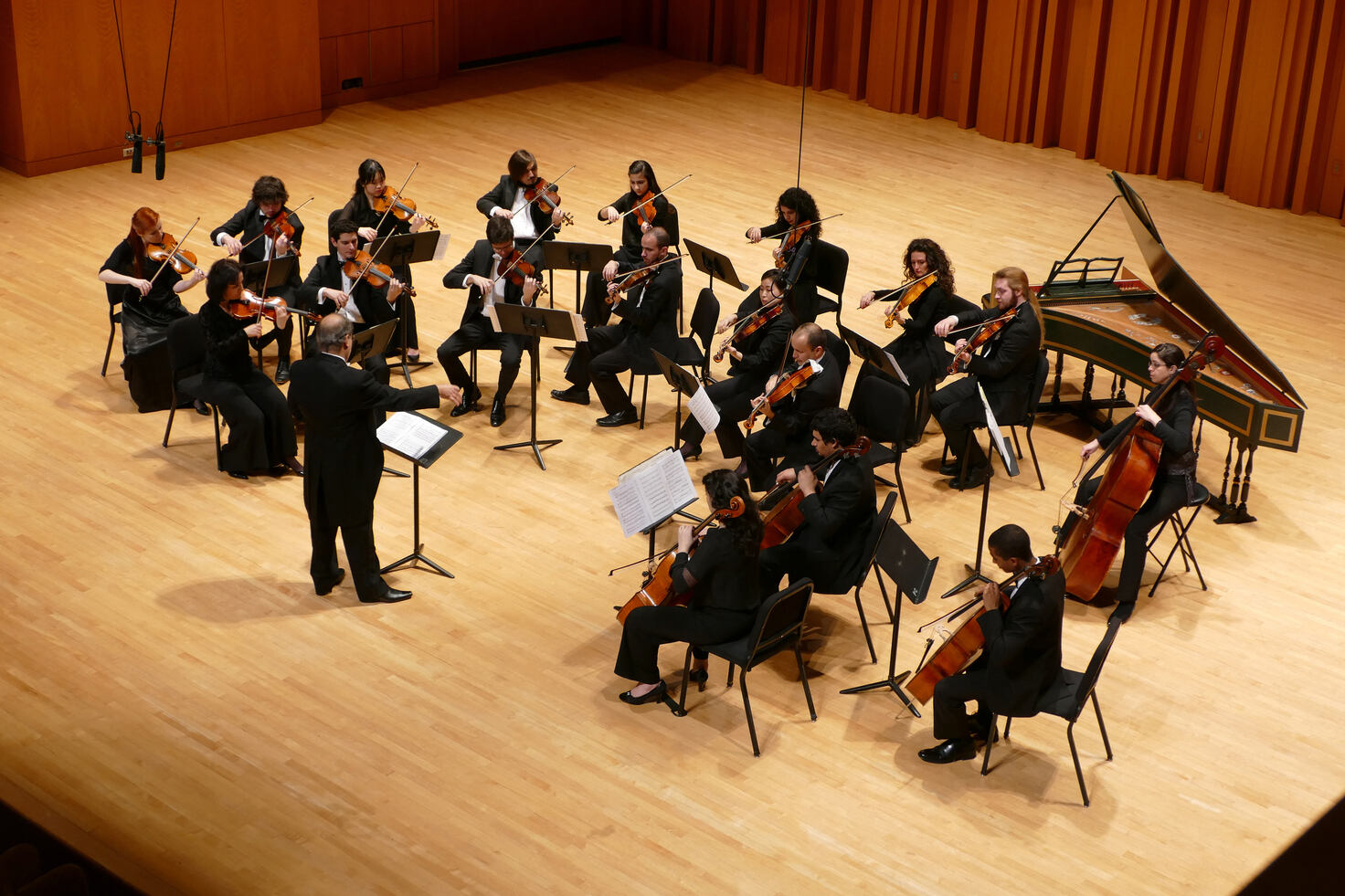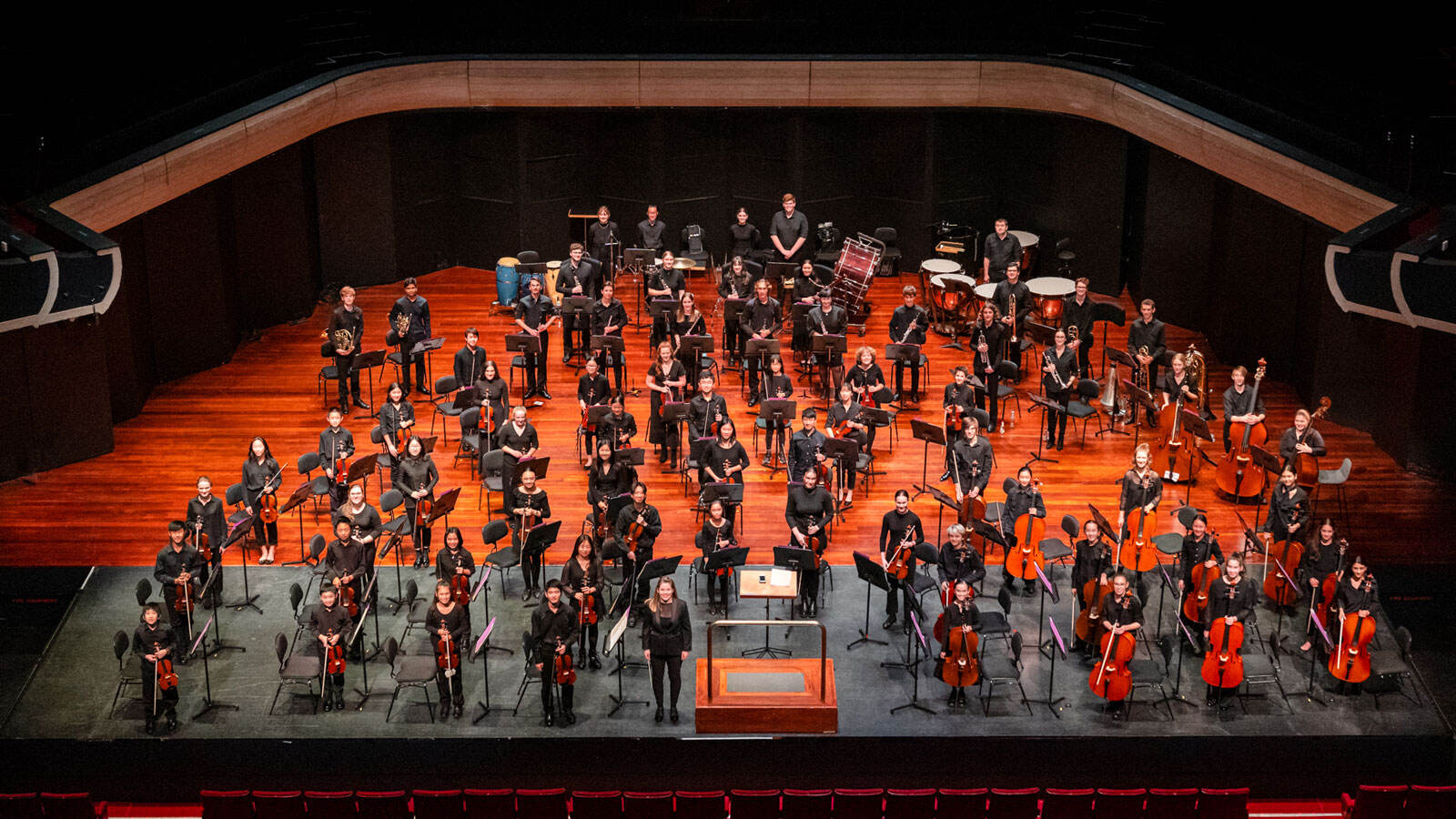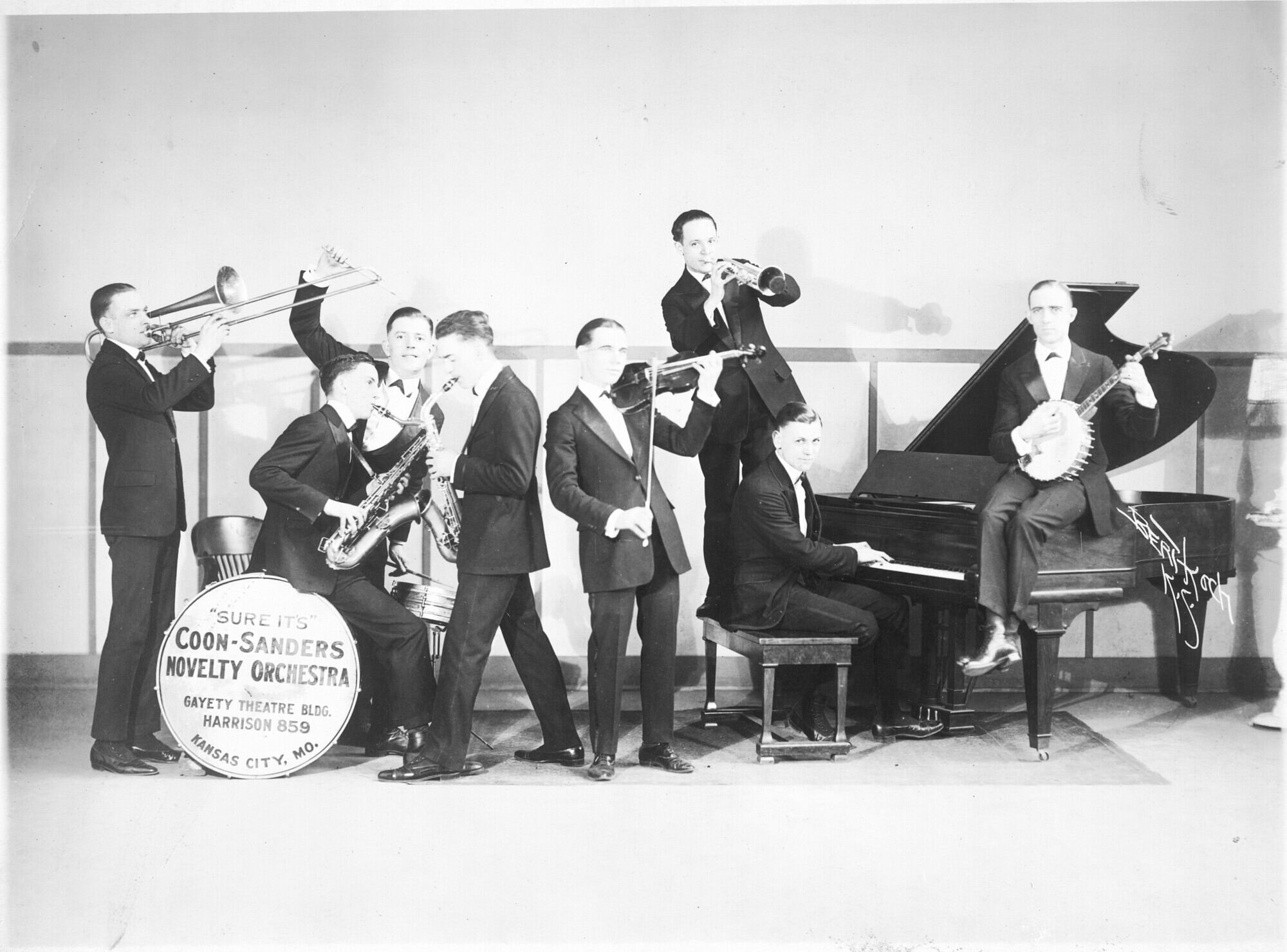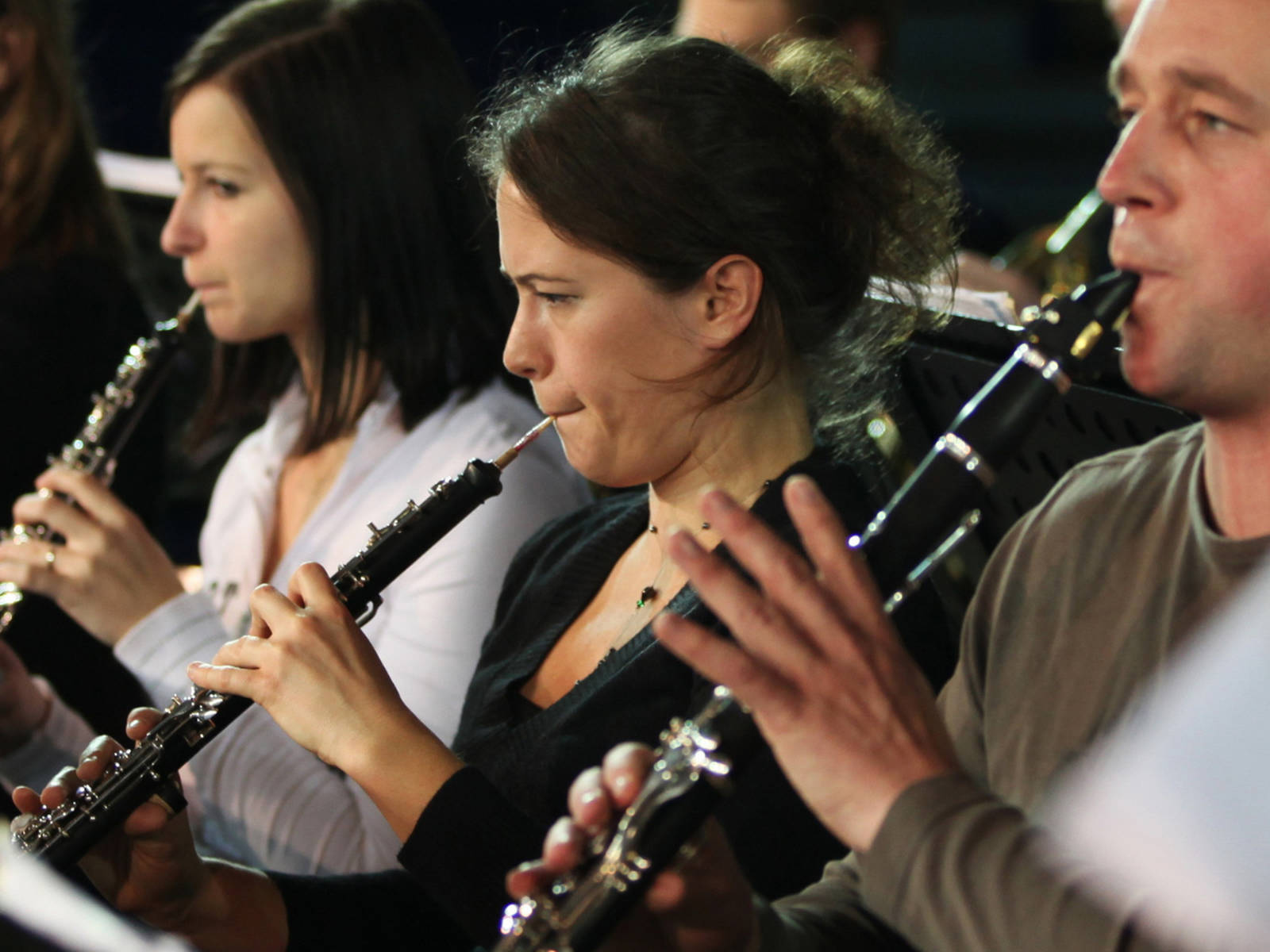Home>Production & Technology>Orchestra>What Is An Orchestra Hit?


Orchestra
What Is An Orchestra Hit?
Published: February 24, 2024
Discover the power and beauty of the orchestra hit, a dynamic musical effect that adds drama and intensity to any composition. Learn how orchestral hits are used in music production and performance.
(Many of the links in this article redirect to a specific reviewed product. Your purchase of these products through affiliate links helps to generate commission for AudioLover.com, at no extra cost. Learn more)
Table of Contents
Introduction
When you think of a symphony orchestra, you might envision a grand stage filled with musicians playing a wide array of instruments, from violins and cellos to trumpets and timpani drums. However, nestled within this orchestral ensemble is a unique and powerful sound known as the orchestra hit. This distinctive sound has left an indelible mark on the world of music, captivating audiences and adding dramatic flair to countless compositions across various genres.
The orchestra hit, often referred to as the orchestral stab or orchestral hit, is a forceful and impactful sound that can be likened to a dramatic punctuation mark in a musical piece. It has the ability to command attention, evoke emotions, and elevate the overall sonic experience. While its name suggests a connection to a full orchestra, the orchestra hit is typically a synthesized sound, created through a combination of electronic and orchestral elements.
Throughout the evolution of music, the orchestra hit has found its place in an extensive range of genres, from classical and film scores to pop, rock, and electronic music. Its versatility and ability to add a touch of grandeur and intensity make it a sought-after element in the repertoire of musicians and producers.
In this article, we will delve into the captivating world of orchestra hits, exploring their history, characteristics, usage in music, and the process of creating them. By understanding the essence of this powerful sound, we can gain a deeper appreciation for its impact and significance in the realm of music production and performance.
History of the Orchestra Hit
The history of the orchestra hit can be traced back to the realm of electronic music and synthesizers, where innovative musicians and producers sought to incorporate the grandeur and impact of orchestral sounds into their compositions. The concept of the orchestra hit emerged during the 1970s and 1980s, a pivotal era in the development of electronic music and the utilization of synthesizers in popular music production.
One of the earliest appearances of the orchestra hit can be attributed to the renowned electronic music group, Kraftwerk. Their groundbreaking album "Trans-Europe Express," released in 1977, featured the innovative use of synthesized orchestral sounds, laying the groundwork for the orchestra hit's future prominence in music production.
As electronic music continued to evolve, the orchestra hit gained traction in the burgeoning genres of synth-pop, new wave, and electronic dance music. It became a defining element in the sonic landscape of the 1980s, gracing hit songs and iconic film soundtracks of the era. The influential work of artists such as Jean-Michel Jarre, Vangelis, and Giorgio Moroder showcased the orchestra hit as a compelling tool for adding grandiosity and drama to their compositions.
Furthermore, the orchestra hit found its way into the realm of hip-hop and rap music, where it became a staple sound in the production of sample-based beats. Producers and beatmakers, inspired by the dynamic impact of orchestral stabs, integrated the orchestra hit into the rhythmic tapestry of their tracks, contributing to the sonic evolution of these genres.
The orchestra hit's journey through music history reflects its adaptability and enduring appeal across diverse musical landscapes. Its fusion of orchestral grandeur with electronic innovation has left an indelible mark on popular music, cementing its status as a timeless and influential sound.
In the subsequent sections, we will delve deeper into the characteristics of the orchestra hit, its widespread usage in music, and the intricate process of creating this iconic sound. Through this exploration, we aim to unravel the essence of the orchestra hit and celebrate its profound impact on the art of music production and performance.
Characteristics of an Orchestra Hit
The orchestra hit possesses a distinctive set of characteristics that contribute to its commanding presence and versatile application in music. Understanding these defining traits is essential for appreciating the impact of this iconic sound.
1. Forceful Impact:
The hallmark of an orchestra hit lies in its forceful and impactful nature. When deployed within a musical composition, it serves as a sonic exclamation point, demanding attention and imbuing the music with a sense of urgency and drama. The sharp attack and powerful resonance of the orchestra hit create a palpable sense of grandeur, making it an ideal tool for punctuating climactic moments in a piece of music.
2. Orchestral Resonance:
Despite being primarily synthesized, the orchestra hit emulates the resonant qualities of traditional orchestral instruments. Its rich and expansive tonal characteristics evoke the grandeur of a full orchestral ensemble, lending a sense of majesty and depth to the sound. This orchestral resonance enables the orchestra hit to seamlessly integrate with orchestral compositions, cinematic scores, and a wide spectrum of musical genres.
3. Dynamic Texture:
The orchestra hit possesses a dynamic and textured sonic profile, capable of adapting to various musical contexts. Whether employed as a thunderous accent in a rock anthem or as a haunting motif in a film score, its versatility allows for nuanced expression and emotional impact. This dynamic texture enables the orchestra hit to transcend genre boundaries, finding relevance in classical, electronic, pop, and experimental music alike.
4. Articulate Articulation:
An essential aspect of the orchestra hit is its articulate articulation, characterized by a precise attack and release. This clarity in its onset and decay ensures that the impact of the sound is felt distinctly, without muddying the sonic landscape. The articulate articulation of the orchestra hit enables it to cut through dense arrangements, adding clarity and emphasis to pivotal moments within a musical composition.
5. Resilient Adaptability:
Despite its origins in electronic music and synthesis, the orchestra hit has displayed resilient adaptability across decades of music production. Its ability to evolve alongside changing production techniques and musical trends speaks to its enduring relevance and timeless appeal. Whether in the analog synthesizers of the past or the digital workstations of the present, the orchestra hit continues to captivate and inspire musicians and audiences worldwide.
In essence, the orchestra hit's characteristics embody a synthesis of grandeur, resonance, versatility, precision, and adaptability, making it an indispensable component of the musical landscape. Its enduring allure lies in its ability to elevate compositions, evoke emotions, and leave an indelible sonic imprint across diverse genres and eras.
Now, let's explore the usage of orchestra hits in music, shedding light on their profound impact on musical arrangements and production.
Usage of Orchestra Hits in Music
The orchestra hit has permeated the fabric of music across a multitude of genres, leaving an indelible imprint on countless compositions. Its versatility and commanding presence make it a sought-after sonic embellishment, capable of elevating musical arrangements and adding a touch of grandeur to diverse genres.
1. Cinematic Soundtracks:
In the realm of film scores and cinematic soundtracks, orchestra hits serve as a powerful tool for accentuating pivotal moments and heightening emotional impact. From epic action sequences to poignant dramatic scenes, the orchestra hit's forceful resonance has been harnessed by composers to underscore the visual narrative, eliciting a heightened sense of tension, triumph, or tragedy.
2. Pop and Rock Music:
Within the realms of pop and rock music, orchestra hits have made their mark as impactful sonic elements, often punctuating choruses, transitions, and climactic sections. Their dynamic texture and forceful impact enable them to inject a dose of theatricality into anthemic rock ballads or pop anthems, amplifying the emotional intensity and creating memorable sonic landmarks within the songs.
3. Electronic and Dance Music:
In the realm of electronic and dance music, the orchestra hit's fusion of orchestral grandeur with electronic innovation has led to its widespread adoption as a dramatic embellishment within pulsating electronic beats and dancefloor anthems. Its commanding presence and dynamic resonance add a layer of theatricality and intensity, propelling listeners into euphoric sonic journeys on dance floors worldwide.
4. Hip-Hop and Rap Production:
The orchestra hit has found a prominent place within the realm of hip-hop and rap production, where its forceful impact and orchestral resonance have been harnessed to underscore the rhythmic cadence of sampled beats. Whether used as a dramatic accent or a recurring motif, the orchestra hit adds a touch of grandiosity to the rhythmic tapestry of hip-hop and rap compositions, amplifying their sonic allure and emotional depth.
5. Orchestral and Classical Compositions:
Beyond the realms of popular music, the orchestra hit has also found relevance within orchestral and classical compositions, where it seamlessly integrates with traditional orchestral instrumentation. Its ability to emulate the grandeur of a full orchestral ensemble makes it a compelling addition to symphonic compositions, allowing composers to infuse modern sonic elements into traditional orchestral arrangements, creating a harmonious blend of classical and contemporary sounds.
In essence, the orchestra hit's usage in music transcends genre boundaries, serving as a unifying sonic force across diverse musical landscapes. Its ability to evoke emotions, heighten drama, and punctuate musical narratives has solidified its status as a timeless and influential sound, perpetuating its relevance in the ever-evolving tapestry of musical expression.
Creating an Orchestra Hit
The process of creating an orchestra hit involves a fusion of synthesis techniques, sound design principles, and a keen understanding of orchestral timbres. While the orchestra hit is often associated with synthesized sounds, its origins lie in the emulation of orchestral instruments through electronic means. Here, we delve into the intricate process of crafting this iconic sound, shedding light on the techniques and considerations involved in its creation.
Synthesis Techniques:
The foundation of creating an orchestra hit lies in the realm of synthesis, where oscillators, envelopes, and filters converge to sculpt its sonic character. One common approach involves utilizing a combination of oscillators to generate rich harmonic content, followed by shaping the sound's amplitude envelope to achieve a sharp attack and sustained resonance. Additionally, the application of resonant filters can further refine the tonal complexity, adding depth and coloration to the sound.
Layering and Texturing:
A hallmark of the orchestra hit's sonic allure lies in its layered and textured nature. To achieve this, multiple sound sources, such as orchestral samples, synthesized waveforms, and percussive elements, are often combined and meticulously balanced to create a cohesive and impactful sonic blend. The layering process allows for the infusion of orchestral resonance and electronic dynamism, resulting in a sound that transcends the boundaries of traditional orchestration.
Harmonic Richness and Depth:
In the pursuit of crafting an authentic and resonant orchestra hit, emphasis is placed on infusing the sound with harmonic richness and depth. This involves careful consideration of harmonic content, tonal balance, and spatial positioning within the sonic spectrum. By harnessing techniques such as frequency modulation, additive synthesis, and spatial processing, the orchestra hit is imbued with a sense of grandeur and expansiveness, akin to the sonic footprint of a full orchestral ensemble.
Articulation and Dynamics:
Central to the expressive power of the orchestra hit is its articulation and dynamics. The meticulous shaping of the sound's attack, decay, sustain, and release phases plays a pivotal role in conveying its forceful impact and nuanced expressiveness. Through the manipulation of envelope parameters and dynamic processing, the orchestra hit is endowed with a sense of clarity, precision, and dynamic range, allowing it to punctuate musical passages with resounding authority.
Integration and Adaptation:
As music production technologies continue to evolve, the process of creating orchestra hits has adapted to embrace the capabilities of modern digital workstations, software synthesizers, and sampling techniques. This integration allows for a seamless fusion of traditional synthesis methods with cutting-edge production tools, empowering creators to sculpt orchestra hits that resonate with contemporary sonic aesthetics while honoring the timeless allure of this iconic sound.
In essence, the creation of an orchestra hit is a harmonious convergence of synthesis artistry, sound sculpting finesse, and a deep appreciation for the grandeur of orchestral timbres. By harnessing these techniques and considerations, musicians and producers continue to breathe life into this timeless sound, ensuring its enduring presence in the ever-evolving landscape of music production and performance.
Conclusion
In the realm of music production and performance, the orchestra hit stands as a testament to the enduring fusion of orchestral grandeur and electronic innovation. Its forceful impact, orchestral resonance, dynamic texture, articulate articulation, and resilient adaptability have solidified its status as a timeless and influential sound, perpetuating its relevance across diverse musical genres and eras.
From its early origins in the electronic music landscape of the 1970s and 1980s to its pervasive presence in cinematic soundtracks, pop anthems, electronic beats, hip-hop compositions, and symphonic arrangements, the orchestra hit has left an indelible mark on the sonic tapestry of music. Its ability to punctuate climactic moments, evoke emotions, and add a touch of grandeur to musical narratives has made it an indispensable sonic embellishment cherished by musicians, producers, and audiences worldwide.
As we reflect on the captivating journey of the orchestra hit, from its inception to its contemporary evolution, we gain a profound appreciation for its enduring allure and transformative impact. It serves as a sonic bridge, uniting the realms of orchestral tradition with the boundless frontiers of electronic sound design, creating a harmonious synthesis of timeless elegance and modern innovation.
The process of creating an orchestra hit embodies a harmonious convergence of synthesis techniques, sound design principles, and a deep understanding of orchestral timbres. Through the meticulous layering, harmonic richness, expressive articulation, and seamless integration with modern production tools, musicians and producers continue to breathe life into this iconic sound, ensuring its enduring presence in the ever-evolving landscape of music production and performance.
In essence, the orchestra hit transcends the boundaries of genre and time, weaving its resounding presence into the fabric of musical expression. Its legacy as a sonic exclamation point, capable of elevating compositions, underscoring visual narratives, and resonating with audiences on a profound emotional level, cements its status as a timeless and influential sound, perpetuating its relevance across diverse musical landscapes and generations.
As we continue to celebrate the orchestra hit's impact and significance, we honor its enduring legacy as a symbol of sonic grandeur, artistic ingenuity, and the harmonious convergence of orchestral tradition and electronic innovation in the ever-evolving symphony of music.

